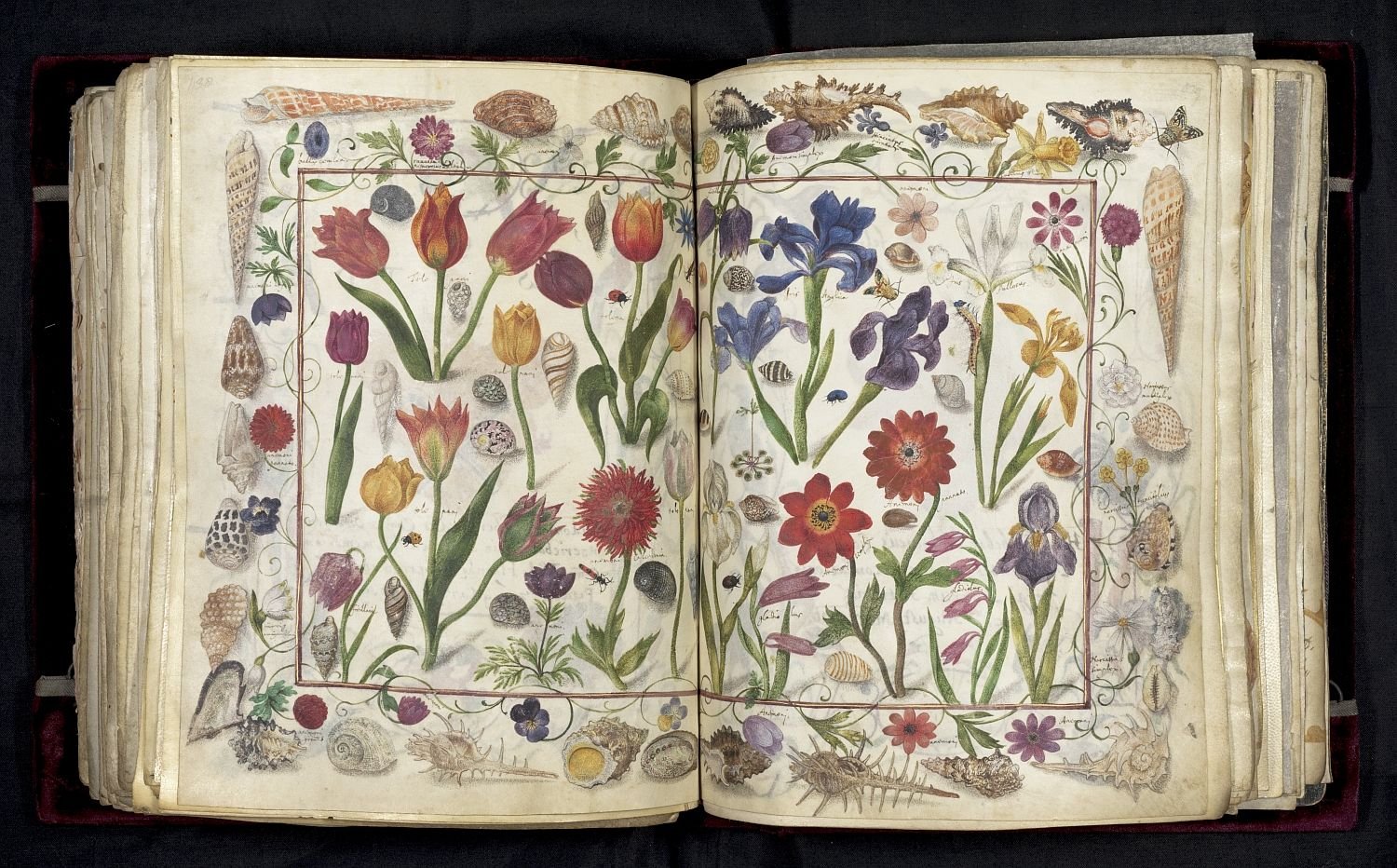
In 1648, Augustus the Younger, duke of Brunswick-Lüneburg, attempted to purchase Das Große Stammbuch, a “friendship book” from the collection of the recently deceased Philipp Hainhofer, a wealthy, well-traveled merchant from Augsburg, Germany. Augustus failed, and the lavishly illustrated volume did not become part of his growing library.
But now, nearly 400 years later, the Herzog August Bibliothek, as Augustus’s collection became known, has finally sealed the deal, snapping up the historic manuscript for a cool $3.1 million from a private collector in a sale brokered by Sotheby’s.
“The acquisition of the Hainhofer Stammbuch is a sensation and a stroke of luck for the preservation of cultural heritage in Germany,” says Björn Thümler, Lower Saxony’s minister for science and culture, in a statement.
Both an art dealer and a diplomat, Hainhofer provided luxury goods to courts throughout Europe over a period of 50 years. During his travels, he asked the crowned head of Europe to add a page his Das Große Stammbuch, also known as an Album Amicorum. The friendship book contains about 100 signatures from powerful rulers, each accompanied by colorful illustrations commissioned from court artists by royal dignitaries.
Philipp Hainhofer’s Das Große Stammbuch. This inscription is by Holy Roman Emperor Rudolf II. Photo courtesy of the Herzog August Bibliothek Wolfenbüttel.
Friendship books were a 16th-century trend, popularized at Germany’s Wittenberg University—Martin Luther’s alma mater—with students collecting signatures in much the same way as a modern yearbook, but often maintaining the practice for decades. Some 25,000 examples exist today, and Hainhofer’s book, which he started as a 15-year-old, is considered the most impressive of its kind.
Among those who signed are Holy Roman Emperor Rudolf II, Cosimo de’ Medici, Duke Wilhelm V of Bavaria, and Frederick V. During Hainhofer’s lifetime, it became a sightseeing destination for visitors to Augsburg.
“No other work of art better reflects the deeply challenging political tensions that were being navigated in Europe at this time,” the auction house told the Guardian.
After the 1648 deal fell through, the Das Große Stammbuch fell out of history, believed to have been lost until it turned up at auction at Christie’s in 2006, selling for $2.4 million on a $600,000 to $800,000 estimate to a private collector in the UK. At the time, researchers realized it had been sold in London in 1931 and then again in the 1940s to Cincinnati collector Cornelius Hauck.
As part of the Herzog August Bibliothek collection, the Das Große Stammbuch will be made publicly available to scholars for the first time. The library plans to digitize the manuscript, making it accessible to the public, and to undertake a three-year research project into its origins and history funded by the state of Lower Saxony and the Volkswagen Foundation. An exhibition is also in the works.
In addition to funds provided by the library, the purchase was made possible by the Kulturstiftung der Länder, the Federal Government Commissioner for Culture and Media, the Volkswagen Foundation, the Ernst von Siemens Kunststiftung, the Stiftung Niedersachsen, and the Rudolf August Oetker-Stiftung.
See more pages from the friendship book below.
Philipp Hainhofer’s Das Große Stammbuch featuring the signatures of August II of Braunschweig-Lüneburg (1613) and Ursula Duchess of Württemberg (1614). Photo courtesy of the Herzog August Bibliothek Wolfenbüttel (HAB).
Philipp Hainhofer’s Das Große Stammbuch. Photo courtesy of the Herzog August Bibliothek Wolfenbüttel.
Latin poems in Philipp Hainhofer’s Das Große Stammbuch. Photo courtesy of the Herzog August Bibliothek Wolfenbüttel (HAB).
Philipp Hainhofer’s Das Große Stammbuch. Photo courtesy of the Herzog August Bibliothek Wolfenbüttel.
Philipp Hainhofer’s Das Große Stammbuch. Photo courtesy of the Herzog August Bibliothek Wolfenbüttel.